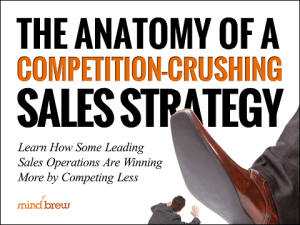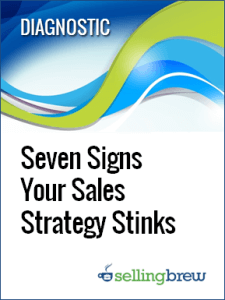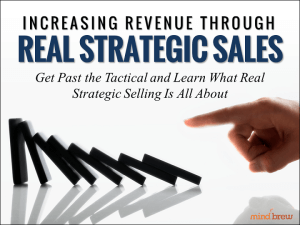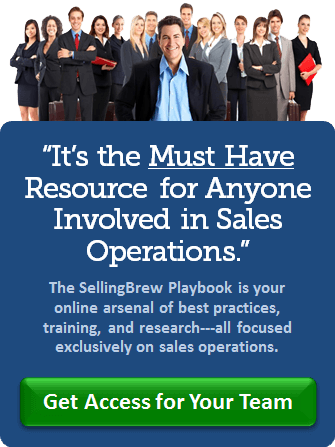Imagine that you are running late for a very important appointment. It’s now 15 minutes before it begins, and you haven’t arrived yet.
So you drive faster
Another five minutes go by, and you still haven’t gotten where you were going. So you do the obvious thing and speed up some more.
But what if you’re not driving in the right direction? It doesn’t matter how fast you go if you haven’t checked the GPS to make sure you’re on the right road.
Clearly, this is a ridiculous situation.
But it’s also exactly the situation that many B2B sales ops teams find themselves in.
The execution trap
When performance slips, management often turns to sales ops to fix it. Maybe numbers are flat. Win rates are slipping. Or margins are thinning.
It becomes sales ops’ job to improve execution. So you look around for some opportunities for small wins. Maybe you streamline sales processes. Take some friction out of the CRM. Send the sales team to negotiation training.
Those might all be worthwhile efforts. But they might not actually address the root problem. You might just be driving faster in the wrong direction.
When the real problem is the sales strategy
Here’s an uncomfortable truth:
You can’t execute your way out of a bad strategy.
When sales performance is lagging, it’s easy to assume the problem is operational. But before you overhaul your processes, it’s worth asking a more fundamental question:
Are we pointed in the right direction?
You can have the most disciplined sales process in the world, but if the strategy behind it is misaligned, no amount of tactical elbow grease will change the real outcome. Sales Ops teams often get stuck trying to optimize flawed systems, when what you really need is to take a step back and look at your strategic foundation.
Looking for red flags
About now, you’re probably getting ready to say that you don’t have the time to do a strategic overhaul. It takes a lot of time to do a thorough analysis.
You’re right.
A full strategic analysis does take a lot of time and resources. And you might not be able to spare that time and effort right now, especially if you are under a lot of pressure from management to fix what’s wrong.
Instead, we would recommend the equivalent of taking a quick glance at the GPS to make sure you’re heading in the right direction. Spend just an hour or so looking for any red flags in your strategy. For example:
- When asked, would the members of your sales and marketing teams all describe your sales strategy in the same way? Or would everyone describe a different set of target customers, value propositions, and competitive differentiators?
- Do you proactively target the specific segments where you have an advantage and are more likely to win the business, faster, and higher margins? Or do you just take the business as it comes—just waiting to see what kinds of “opportunities” drop into the pipeline and hoping that things will work out in the end?
We cover five more potential red flags in Seven Signs Your Sales Strategy Stinks. It’s well worth the effort to think about each one and make sure that you’re heading someplace you want to go.
And if you turn up anything worrisome, check out Anatomy of a Competition-Crushing Sales Strategy and Increasing Revenue Through Real Strategic Sales. They can help you craft a strategy more likely to help you reach your goals.
Before you dive into your next sales process initiative or tech investment, make sure your strategy is truly set up for success. Because if you’re optimizing the wrong thing, you’re just going faster in the wrong direction.
Seven Signs Your Sales Strategy Stinks
Anatomy of a Competition-Crushing Sales Strategy

The better your sales strategy, the easier it is for your sales team to achieve their objectives. But sales strategy is often misunderstood. In this on-demand training session, learn how leading sales operations are improving their sales strategies to win more business, while actually competing less.













